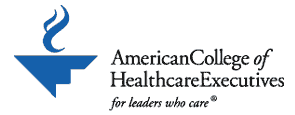We have seen in an earlier article that the folks who design and construct new hospitals and healthcare facilities in the non-federal hospital sector have failed to embrace the federal sectors’ practice of constructing their facilities to reduce vulnerabilities in today’s increasingly hostile environment.
Many of our architect friends are aware of this failure and indicate that they are faced with the reality that those who finance and buy these facilities rarely place value on the multiple benefits of building more robust structures in locations which enhance physical security.
 How about the folks who will be responsible for the safety and security of all stakeholders once the facility is up and running? Hospital Boards bear the ultimate responsibility for insuring the safety and security of healthcare workplaces/care sites. Administrators are responsible for the day-to-day safe and secure operation of the facility. One would hope that all these individuals would be prepared to make sure they were equal to the task.
How about the folks who will be responsible for the safety and security of all stakeholders once the facility is up and running? Hospital Boards bear the ultimate responsibility for insuring the safety and security of healthcare workplaces/care sites. Administrators are responsible for the day-to-day safe and secure operation of the facility. One would hope that all these individuals would be prepared to make sure they were equal to the task.
Across the span of one lifetime the culture of stewardship in the nation’s healthcare delivery system has changed. The system has morphed from its altruistic, patient-centered roots into a highly competitive, bottom-line-oriented commercial enterprise with more critical decisions being made away from the locus of care. That does not mean that the system is devoid of altruistic, compassionate folks. However, they have limited influence in the direction of patient-centered care.
Hospital Board members come from varied backgrounds. They range from dedicated local citizens who have little working knowledge of healthcare complexities to highly sophisticated members from healthcare and other industries. Not unlike other Board memberships engaged in high stakes enterprises, there are real conflicts of interest. In earlier times when members were drawn from the local community the conflicts were more transparent. On the upside, these stewards were physically and emotionally close to events within the community. This is particularly the case in times of crisis. Timely decisions on responses to looming threats did not have to be filtered through multiple layers of economic interests.
Life and death decisions associated with “protect in place or evacuate†call for timely  information. Hospital authorities are not in a position to “protect in place†if they do not know how much food, water, drugs and beds are available. Just in time supply chains may be a prudent strategy to save costly storage operations but they deny common sense choices in times of crisis.
The decision to “evacuate†is no less complex. Waiting for approval from some distant authority which arrives when it is no longer a choice can be deadly. We deal with this issue in our book published in the August, 2011- Deadly Neglect: Apathy and Denial vs Act of God.
Hospital administrators come from many backgrounds. Physicians, Nurses, Masters of Healthcare Administration, Masters of Business Administration and those with less academic preparedness who rise through the ranks. One thing they have in common with Board Members is that their formal exposure to all-hazards management in general and terrorist threats in particular, is limited.
It falls to professional educational organizations to provide their members with appropriate continuing educational exposures to maintain their core competencies. Additionally, administrators have a duty to keep their boards informed. It is understood that professional trade organizations must scan the healthcare horizon and select from a host of dynamic competing events and identify education needs of their client membership.
Professional educational organizations have enormous influence on what their members perceive as priority issues within the profession. One such organization is the American College of Healthcare Executives. In their own words:
“The American College of Healthcare Executives is an international professional society of more than 30,000 healthcare executives who lead hospitals, healthcare systems and other healthcare organizations.
 ACHE is known for its prestigious FACHE® credential, signifying board certification in healthcare management, and its educational programs including the annual Congress on Healthcare Leadership, which draws more than 4,000 participants each year. ACHE’s established network of more than 80 chapters provides access to networking, education and career development at the local level.
ACHE is known for its prestigious FACHE® credential, signifying board certification in healthcare management, and its educational programs including the annual Congress on Healthcare Leadership, which draws more than 4,000 participants each year. ACHE’s established network of more than 80 chapters provides access to networking, education and career development at the local level.
In addition, ACHE is known for its magazine, Healthcare Executive, and its journals, the Journal of Healthcare Management and Frontiers of Health Services Management, as well as groundbreaking research, career development and public policy programs. ACHE’s publishing division, Health Administration Press, is one of the largest publishers of books and journals on all aspects of health services management including textbooks for use in college and university courses.
Through such efforts, ACHE works toward its goal of being the premier professional society for healthcare executives dedicated to improving healthcare deliveryâ€.
The author has been a FACHE since 1988. The organization has advanced the profession in many ways. I have benefited greatly by my association with ACHE and the delivery of healthcare to the nation is measurable better as the result of the College’s influence on the industry.
The year I received my ACHE Fellowship was the same year that President Reagan issued Executive Order 12656: Assignment of Emergency Preparedness Responsibilities. The Department of Health and Human Services (DHHS) was tasked with the development of a comprehensive national healthcare plan to mobilize the nation’s healthcare industry to meet the immediate challenges posed by the threat of post-cold war Weapons of Mass Destruction (WMD) falling into the hands of non-state terrorists.
 Fast forward past WTC bombing 1, Oklahoma City Murrah Building, 9/11 WTC 2 and Pentagon attacks, establishment of the Department of Homeland Security, a plethora of Homeland Security Presidential Directives (HSPDs) etc. and application to the 2004 ACHE seminar on “Disaster Managementâ€.
Fast forward past WTC bombing 1, Oklahoma City Murrah Building, 9/11 WTC 2 and Pentagon attacks, establishment of the Department of Homeland Security, a plethora of Homeland Security Presidential Directives (HSPDs) etc. and application to the 2004 ACHE seminar on “Disaster Managementâ€.
We will follow the incredible journey through a maze of encounters which may be characterized along a continuum of apathy, denial and cognitive dissonance, in the second part of this two part series.






0 Comments